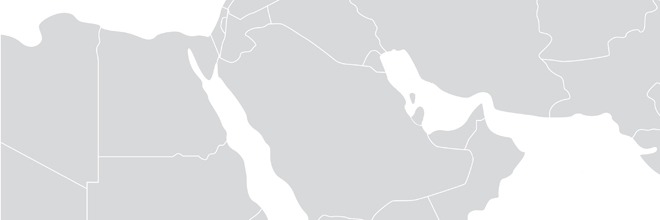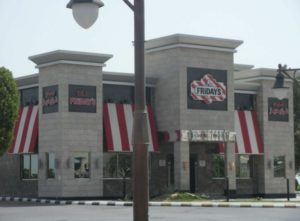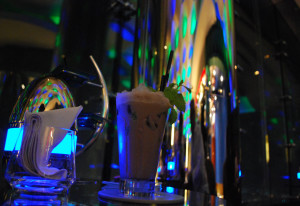In the Middle East, eating out equals prime socializing time. No wonder then that the hospitality industry in the Middle East has experienced rapid restaurant growth and is set for more.
Restaurant’s Finding Success in the Middle East
Restaurateurs looking to expand will be happy to know that several big chains have some of their most successful locations in the Middle East. P.F. Chang’s, for instance, has three of its ten top-performing locations in the region.
While the UAE continues to be a good place for new restaurants, don’t limit your Middle East expansion to Dubai or Abu Dhabi. Qatar is a magnet for tourists from across the Middle East. The country saw a 60 percent increase in tourism in 2012, and all those tourists are looking for places to eat. Turkey is also a potential new market with Shake Shack and British celebrity chef Jamie Oliver moving in.
The Key to the Middle East’s Prosperity
These are wealthy, oil-rich countries with both a growing local and expat population, low labor costs, and a love of American and Western brands. Add to that a very limited array of entertainment options (no cinemas, no bars) in some of these countries and you have the perfect mix for a focused and enthusiastic consumer restaurant market.
Take Saudi Arabia, for example. In this Muslim country where alcohol is prohibited and there are less ways forms of entertainment, dining out is the biggest draw. A 2009 “Who Eats Where” report said that the average Saudi consumer dines out two to three times a week on average and that 64 percent of fast food sales are eat-in, rather than take-away. Over in the UAE, the average household spends $326.71 a month eating out.
American and Western Restaurants on the Rise in the Middle East
American and Western restaurant chains remain popular in the Middle East. The region’s countries were first introduced to chains like McDonald’s during and soon after the Gulf War. Since then many Western fast food places have taken firm root in the country. Case in point: Dairy Queen has been expanding into Saudi Arabia since 2011 and has DQ Grill and Chill locations in Bahrain, Oman and Qatar.
Long-established casual dining chains like Applebee’s are also popular. Diners can celebrate the end of the week all week at the 43 (and expanding) TGI Friday’s locations scattered throughout the Middle East. But an influx of new chains started showing up in the last several years like The Melting Pot, Cheesecake Factory and Shake Shack.
Western brands are so hot that even in Iran, a company has created an unauthorized knock-off of KFC.
Menu Adaptations in the Middle East
Western franchises have to be willing to adapt to each Middle Eastern country’s customs and dietary restrictions. Many of the region’s countries prohibit the consumption of pork and alcohol and call for halal meat.
While the Cheesecake Factory has exacting franchise menu standards and many alcohol- and pork-based dishes on its menu, the chain was still able to adjust its American menu to meet Muslim dietary restrictions before its first two branches opened in Dubai. The company was able to tweak everything from their pork bacon (now using beef bacon) dishes to their famous Chicken Madeira dish (now without wine).
And one surprise was that Cheesecake Factory sales of nonalcoholic beverages like mocktails were so popular that beverage sale percentages at the Dubai location equaled those in the US, spurring the company to plan twenty more restaurant openings in the Middle East.
Franchising Opportunities with Investors in the Middle East
In another interesting twist, smaller western restaurants and chains seeking to start a franchise or add more restaurants to an existing franchise are looking east to expand their brand. New Miami Subs Grill, Florida’s biggest regional chain with stores in South Carolina as well, announced it would open 56 new restaurants in the Middle East even while the brand is relatively unknown in other parts of the US.
Many of these western chains are being licensed to Middle Eastern-owned companies like M.H. Alshaya Co., which controls 70 different brands in the region including Starbucks, Le Pain Quotidien, and Pinkberry.
Another example? After unsuccessful attempts to open more locations in Brooklyn and beyond, an organic tea shop called Tea Lounge decided to start franchising in Kuwait after being approached by a Kuwaiti firm.
Coffee and Tea Spots Expanding in the Middle East

And speaking of hot drinks, cafés and tea shops look like a promising growth area in the region. While traditional tea shops have long existed, young Middle Eastern urbanites and expats are looking for more Western-style cafés. Like full-service restaurants and fast food joints, cafés are also places to hang out with friends or linger over your computer on free Wi-Fi.
Nestle Toll House Café by Chip and Tim Hortons are among the Western coffee shops establishing themselves in the Middle East. However, a 2009 Euromonitor International report showed that, at least in Saudi Arabia, regional coffee manufacturers were still the largest coffee sources.
An Emirati businesswoman has seen her branch of the Asian coffee and bun chain PappaRoti quickly sprawl from one Dubai Mall location into eight other countries since her first location opened in the Middle East in 2009. Euromonitor International also estimated that between 2009 and 2014, food service hot drinks would grow by 124.9 percent in Saudi Arabia.
Luxury Afoot in the Middle East’s Hospitality Industry
Luxury hotels are under construction throughout the Middle East, leading to new spaces for restaurants and cafes. The Marquis Dubai has 11 dining options, and the captive audience at Rosewood Abu Dhabi on Al Maryah Island will have nine restaurants to choose from in the hotel alone.
Luxury isn’t limited to hotels, though. Chefs like Alain Ducasse are delighting guests with rich dishes. Ducasse created an $87.90 camel dish for his new restaurant at the Museum of Islamic Art in Doha, Qatar.
Key Takeaways
- Qatar saw a 60 percent increase in tourism in 2012.
- 64 percent of fast food sales in Saudi Arabia are eat-in, rather than take-away.
- Hot drinks are slated to grow by 124.9 percent in Saudi Arabia between 2009 and 2014.
Interested in learning more about the hospitality industry in the Middle East? Subscribe to our free newsletter.




